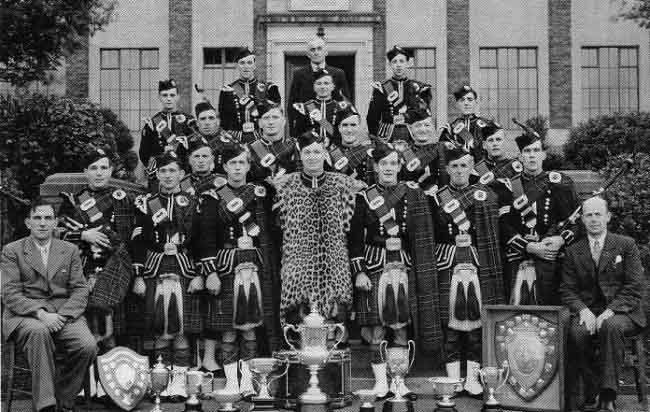Chanter search comes full circle
In October 2018, we published a story about Chris Sutherland’s modified pipe chanter. Sutherland was the pipe-major of the Grade 1 Bowhill Colliery, winners of the 1947 World Championship, the first official running of the event, which formally took over from the de facto World’s – the Cowal Championship held traditionally at the Cowal Highland Gathering in Dunoon, Scotland.
 Another custom chanter story . . . from 1960
Another custom chanter story . . . from 1960
October 2, 2018
Back then, many bands in the UK were sponsored by the numerous coal mining operations dotting the country. Piping and drumming was generally a pursuit of the “working class,” the now-dated pejorative term for highly skilled professionals who held important jobs that didn’t require a university degree or the nepotism of a wealthy family member.

Most members of colliery bands were actual coal miners, including Sutherland, whose right / bottom hand was crushed on the job working at Bowhill colliery. His index finger had to be amputated.
Undeterred, Sutherland wanted to keep piping, so he taught himself to play using his thumb instead of his index finger.
![Chris Sutherland's modified chanter and pipes on display at the National Piping Centre's museum in Glasgow. [Photo John Slavin]](https://www.pipesdrums.com/storage/2022/03/Sutherland_Chris_chanter_01.jpg)
At the time, we didn’t know if the chanter still existed.
Until now.
Recently, Janet Ritchie, Chris Sutherland’s daughter, read our article, and recalled that her father’s pipes might have been donated to the to the museum at the National Piping Centre by the late Bob Shepherd, the pipe-major of two-time World Champions Dysart & Dundonald, also originally a band sponsored by a colliery.
She contacted the National Piping Centre in Glasgow, and, sure enough, they have the pipes and the modified chanter, which are now on display in their Museum of Piping – a must-visit treasure trove of important artifacts from our rich history, professionally curated by former Lead Curator of the Museum of Scotland, Hugh Cheape.
We learned of Sutherland’s chanter after our story about G1 Reeds working with Grade 1 piper Andrew Shilliday of Dungannon, Northern Ireland, to create a modified pipe chanter to help him return to playing the pipes.
Our thanks to Janet Ritchie and the National Piping Centre for bringing the story of Chris Sutherland’s modified chanter full circle.
If you have an example of pipes, practice chanters or drums that were modified to help a piper or drummer to keep playing, please let us know. We’re always please to hear from you.
Related
 Another custom chanter story . . . from 1960
Another custom chanter story . . . from 1960
October 2, 2018
 G1 helps to put Grade 1 piper back on the pipes
G1 helps to put Grade 1 piper back on the pipes
September 18, 2018

NO COMMENTS YET